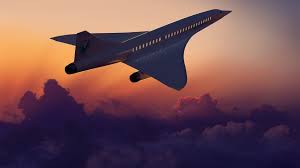
Breaking News
 Trump Claims $18 Trillion in Tariff Revenue, Health Care Costs Down 1000%
Trump Claims $18 Trillion in Tariff Revenue, Health Care Costs Down 1000%
 WATCH: US Attorney Announces Rob Reiner's Son Charged with 2 Counts of First Degree Murder...
WATCH: US Attorney Announces Rob Reiner's Son Charged with 2 Counts of First Degree Murder...
 Trump Orders Full Blockade Of Sanctioned Oil Tankers Off 'Terrorist' Venezuela
Trump Orders Full Blockade Of Sanctioned Oil Tankers Off 'Terrorist' Venezuela
 Side Effects Of 30 Antidepressants Ranked And Compared: Lancet Study
Side Effects Of 30 Antidepressants Ranked And Compared: Lancet Study
Top Tech News
 This tiny dev board is packed with features for ambitious makers
This tiny dev board is packed with features for ambitious makers
 Scientists Discover Gel to Regrow Tooth Enamel
Scientists Discover Gel to Regrow Tooth Enamel
 Vitamin C and Dandelion Root Killing Cancer Cells -- as Former CDC Director Calls for COVID-19...
Vitamin C and Dandelion Root Killing Cancer Cells -- as Former CDC Director Calls for COVID-19...
 Galactic Brain: US firm plans space-based data centers, power grid to challenge China
Galactic Brain: US firm plans space-based data centers, power grid to challenge China
 A microbial cleanup for glyphosate just earned a patent. Here's why that matters
A microbial cleanup for glyphosate just earned a patent. Here's why that matters
 Japan Breaks Internet Speed Record with 5 Million Times Faster Data Transfer
Japan Breaks Internet Speed Record with 5 Million Times Faster Data Transfer
 Advanced Propulsion Resources Part 1 of 2
Advanced Propulsion Resources Part 1 of 2
 PulsarFusion a forward-thinking UK aerospace company, is pushing the boundaries of space travel...
PulsarFusion a forward-thinking UK aerospace company, is pushing the boundaries of space travel...
 Dinky little laser box throws big-screen entertainment from inches away
Dinky little laser box throws big-screen entertainment from inches away
 'World's first' sodium-ion flashlight shines bright even at -40 ºF
'World's first' sodium-ion flashlight shines bright even at -40 ºF
Supersonic travel is on the verge of a comeback--here's why

Flying faster than the speed of sound still sounds futuristic for regular people, more than 15 years after the last commercial supersonic flights ended. The planes that made those journeys, the 14 aircraft collectively known as the Concorde, flew from 1976 to 2003. It traveled three times faster than regular passenger aircraft, but the airlines that flew it couldn't make a profit on its trips.
The reason the Concorde was unprofitable was, in fact, a side effect of its speed. When the plane sped up past the speed of sound—about 760 mph—it created shock waves in the air that would hit the ground with a loud and sudden thud: a sonic "boom." It is so alarming for people on the ground that U.S. federal regulations ban all commercial aircraft from flying faster than the speed of sound over land.
Those rules, and the amount of fuel the plane could carry, effectively limited the Concorde to transatlantic flights. Operating the plane was still so expensive that a one-way ticket between London and New York could cost over $5,000. And the Concorde often flew with half its seats empty.
The main benefit of supersonic travel is the reduction in flight time. A three-hour flight across the Atlantic could make a day trip possible from the U.S. to London or Paris, essentially saving one whole work day.



